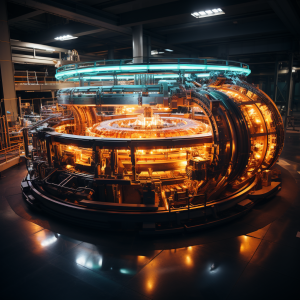
What is the role of virtual particles in quantum field theory?
Quantum field theory (QFT) is a theoretical framework in physics that combines quantum mechanics and special relativity to describe the fundamental particles and their interactions. One of the most intriguing and subtle aspects of QFT is the concept of “virtual particles”. Virtual particles are indispensable in understanding phenomena like particle interactions, the structure of vacuum, and quantum fluctuations. This post aims to provide a comprehensive explanation of the role virtual particles play in QFT.
Introduction to Virtual Particles
Virtual particles are temporary particles that exist on borrowed energy. They pop in and out of existence in a way that does not violate the energy-time version of Heisenberg’s Uncertainty Principle, which allows a violation of energy conservation as long as it happens for a short enough time. Because of their fleeting existence, virtual particles cannot be directly detected, but their effects can be measured and have been confirmed in numerous experiments.
Feynman Diagrams and Particle Interactions
Richard Feynman developed diagrams, now known as Feynman diagrams, as a pictorial tool for simplifying and visualizing the complex mathematical calculations of QFT. In these diagrams, particles are represented by lines. Real particles follow lines that extend from the past to the future, while virtual particles are represented by lines inside the diagrams that do not extend to the edges.
Virtual particles are essential in understanding how forces act at the quantum level. For instance, consider the electromagnetic force between an electron and a positron. The Feynman diagram for this interaction involves an exchange of virtual photons (the force carrier of the electromagnetic force) between the electron and the positron.
Vacuum Fluctuations and the Quantum Vacuum
In classical physics, the vacuum is a space completely empty of matter or energy. But in QFT, this is not the case. According to QFT, even the vacuum is teeming with virtual particles and antiparticles constantly popping into and out of existence, a phenomenon known as vacuum fluctuations. This leads to the idea of the “quantum vacuum” or the “vacuum state,” which is the lowest energy state in QFT and is far from empty.
The effects of these vacuum fluctuations have been experimentally verified. One example is the Casimir effect, where two uncharged conductive plates in a vacuum experience an attractive force due to the interaction with the quantum vacuum.
Renormalization
Virtual particles play a crucial role in the process of renormalization in QFT. Renormalization is a technique used to deal with infinities that arise in the calculations of QFT. This occurs because the equations of QFT allow particles to interact with themselves, leading to infinite self-energies.
To resolve this, physicists use the concept of bare and physical (renormalized) parameters. The bare parameters (like mass and charge) are infinite, but when combined with the infinite contributions from virtual particles, they yield finite, measurable quantities known as the physical parameters. Renormalization is thus the process of redefining the parameters of the theory so that the infinities cancel out, leaving behind the physical parameters that we can measure in the laboratory.
Quantum Tunnelling
Quantum tunnelling is a phenomenon in which particles can pass through a potential energy barrier that they could not surmount according to classical physics. This behavior is made possible due to the wave-like nature of particles in quantum mechanics and the role of virtual particles. When a particle encounters a barrier, it can momentarily borrow energy to become a virtual particle and cross the barrier, before turning back into a real particle on the other side.
Conclusion
In QFT, virtual particles are a tool to understand and calculate quantum phenomena. They are central to the depiction of particle interactions, they characterize the lively nature
of the quantum vacuum, and they are crucial in renormalization, a process that makes the predictions of QFT match up with the observed realities of the world. While their transient existence and peculiar properties may seem strange, they remain an essential and powerful concept in our understanding of the quantum world.




